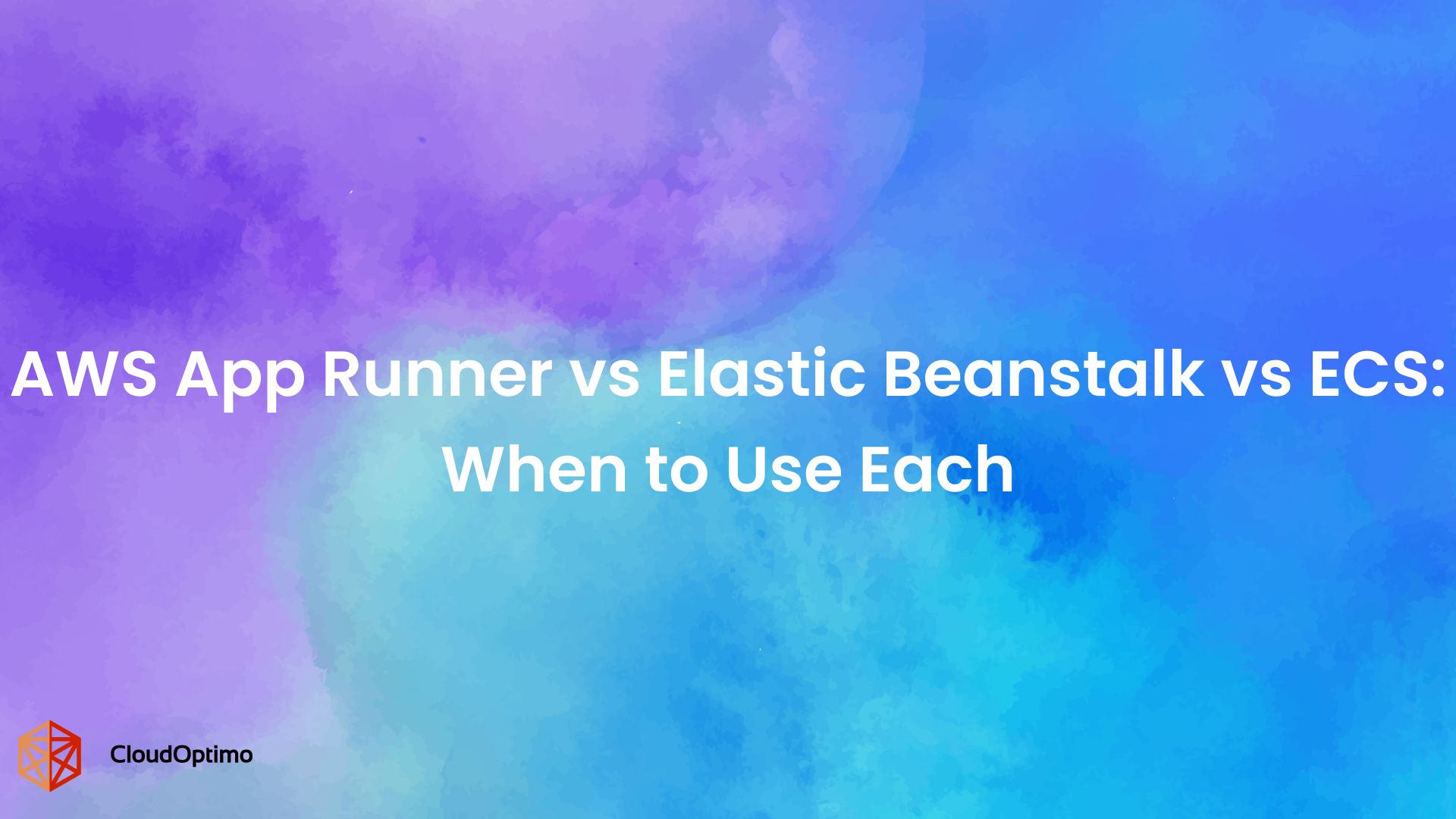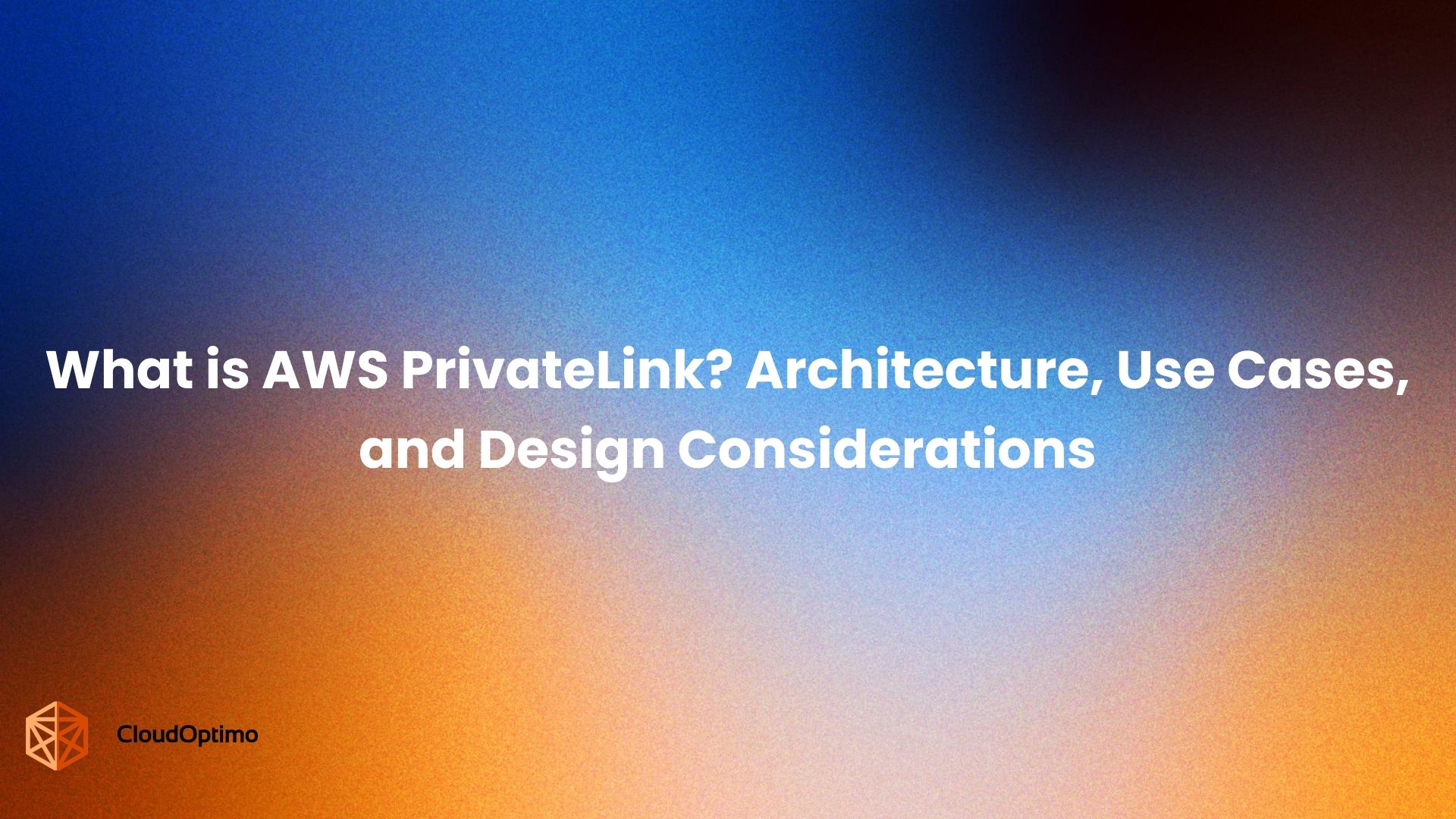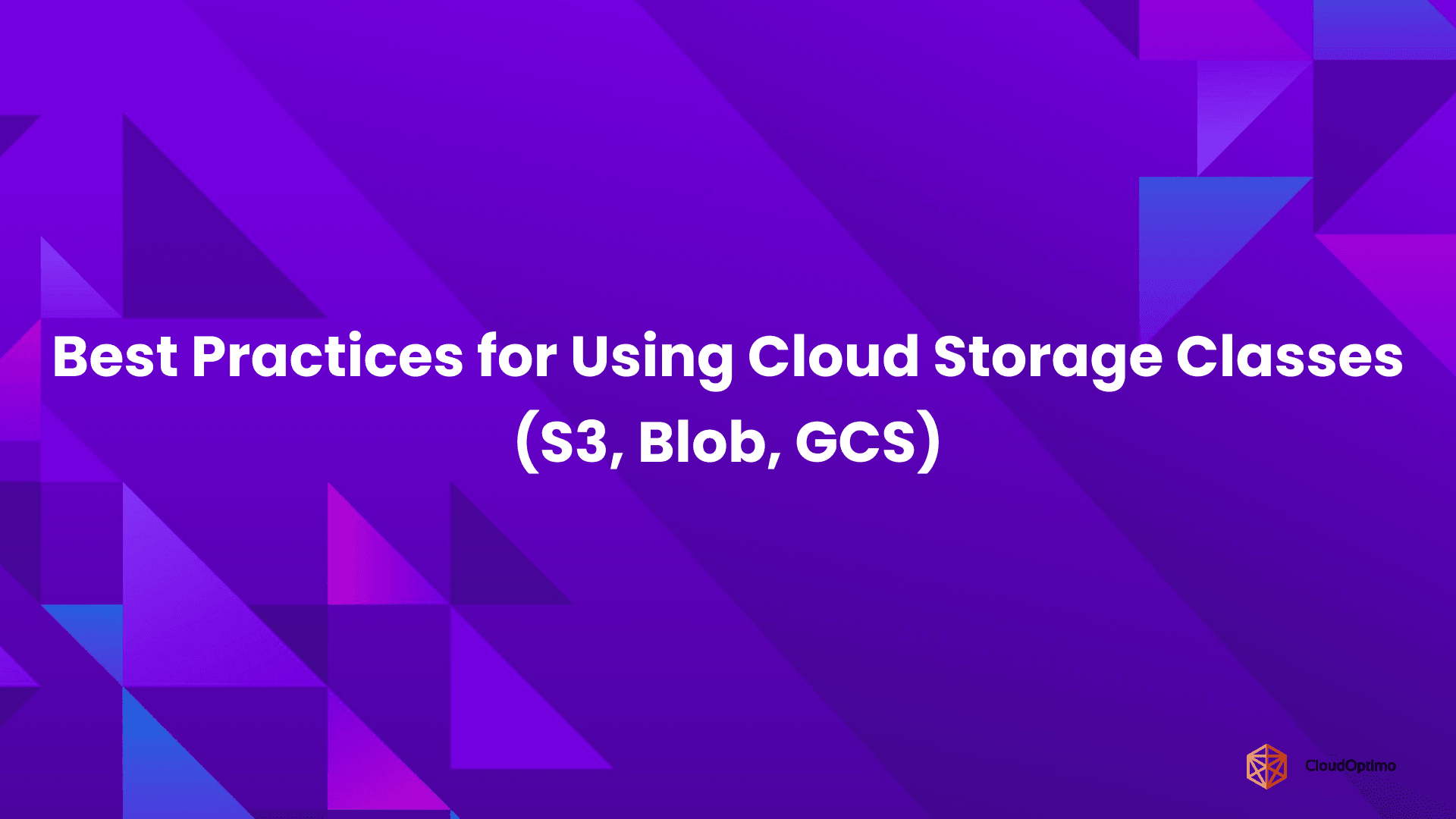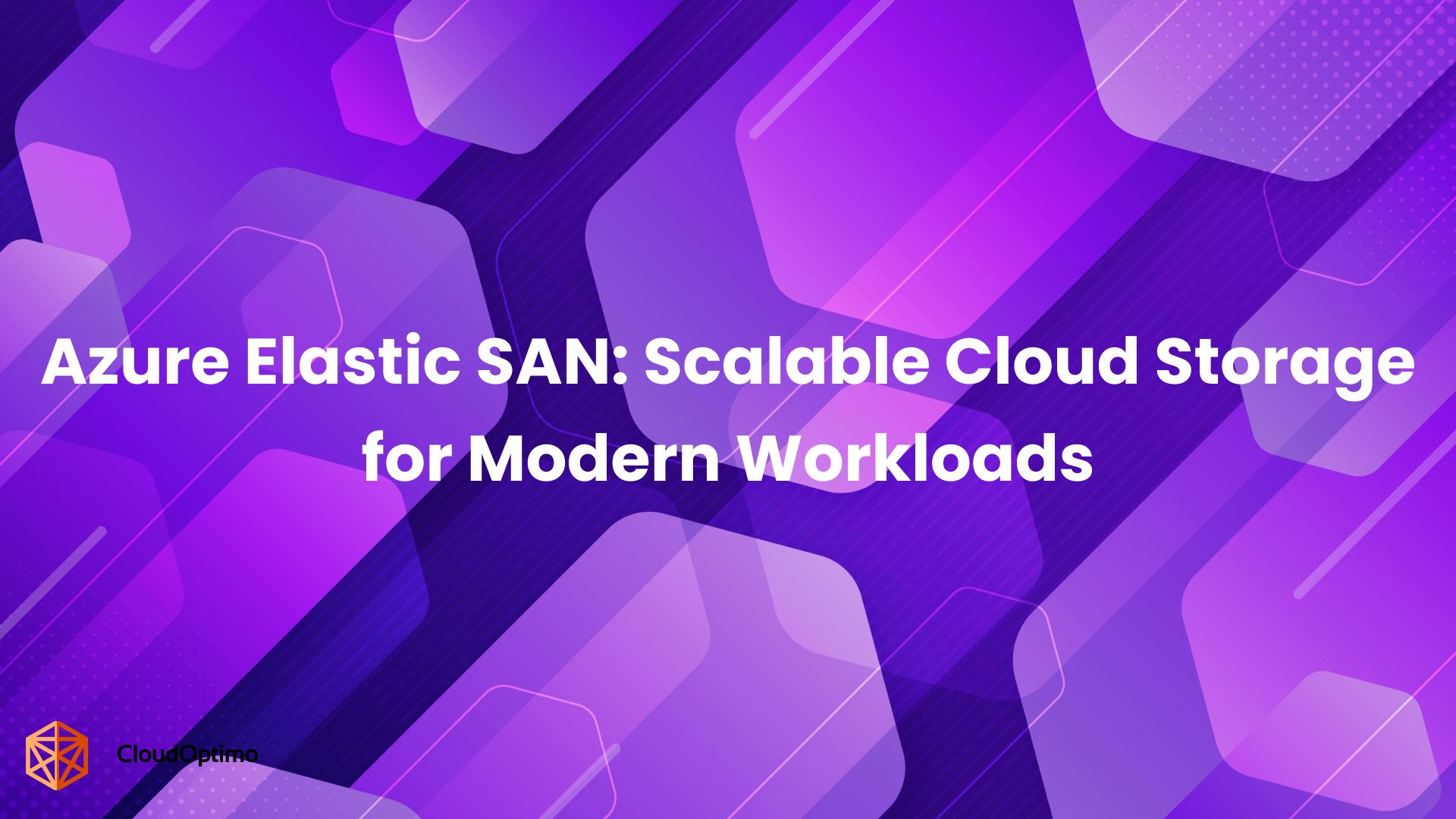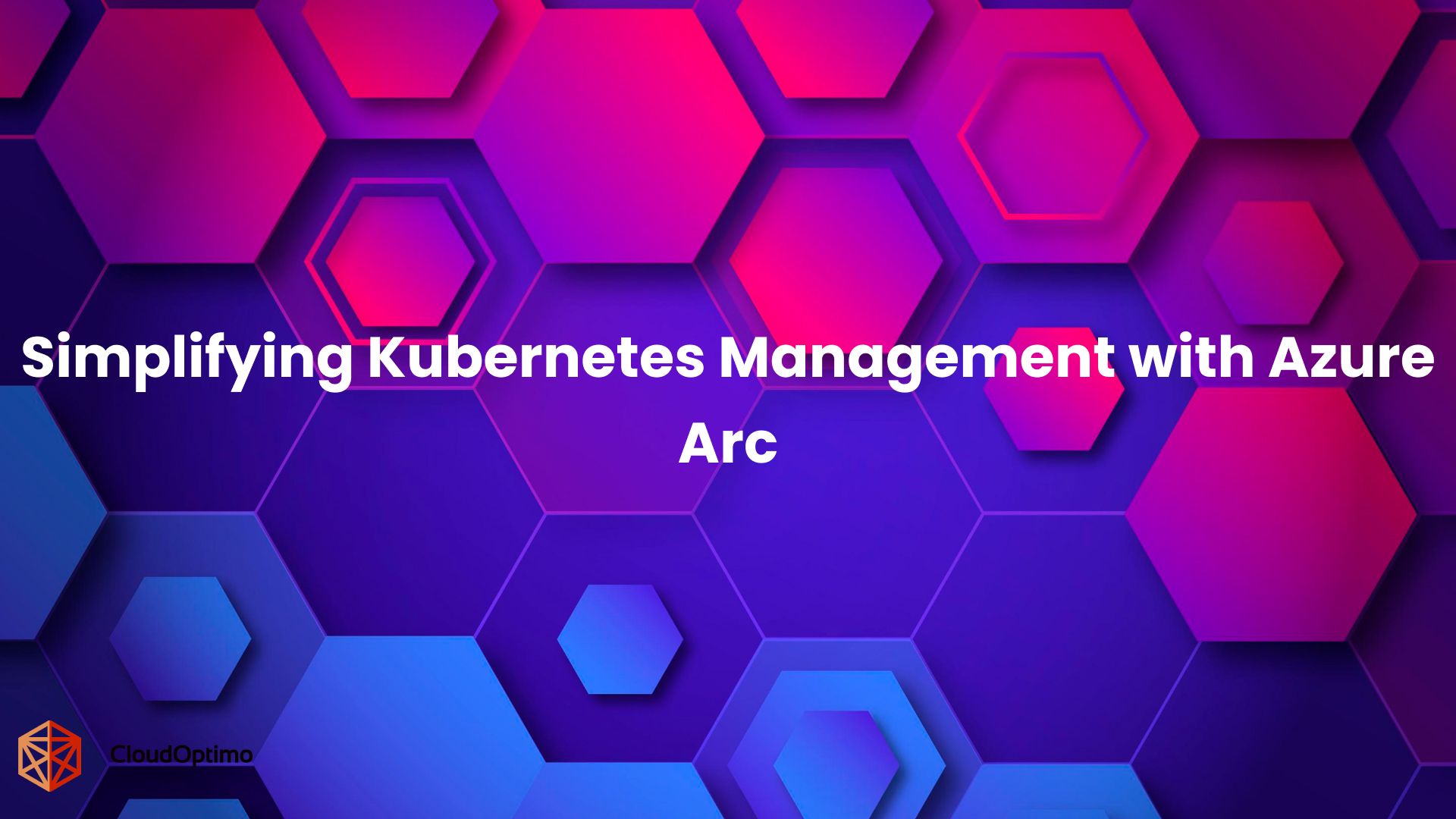If managing S3 costs seems more complex than expected, you're not alone. Many users focus on basic storage fees but miss how requests, data transfers, and other components add up. This blog breaks down everything you need to know about S3 pricing, helping you keep costs in check.
S3 Pricing Overview
Before diving into the details, let's take a quick look at the main factors that influence S3 pricing:
- Storage class
- Amount of data stored
- Number and type of requests
- Data transfer
- Additional features and management tools
Understanding these components is crucial for estimating your S3 costs accurately.
Cost Components of S3 Storage
Understanding the various cost components associated with S3 storage is essential for effective cost management. Here's a breakdown of the key factors:
- Storage Pricing
- Amazon S3 offers different storage classes based on how often you access your data. For frequently accessed data, the S3 Standard class is pricier but provides fast access. For data you access less often, like S3 Glacier Deep Archive, the cost is lower, though access is slower.
- Free Tier: AWS gives you up to 5GB of S3 Standard storage, 20,000 GET requests, and 2,000 PUT requests for free each month. Knowing these limits can help you avoid unexpected charges.
- Request Pricing
- PUT, COPY, POST, LIST Requests: $0.005 per 1,000 requests for actions like uploading or listing files.
- GET, SELECT, and Other Requests: $0.0004 per 1,000 requests for retrieving or querying files.
- Data Transfer Pricing
- Inbound Transfers (uploading to S3): Free
- Outbound Transfers (downloading from S3):
- First 1 GB per month: Free
- Up to 10 TB per month: $0.09 per GB
- Next 40 TB: $0.085 per GB
- Next 100 TB: $0.07 per GB
- Transfer Acceleration: $0.04 per GB for faster data transfers using CloudFront.
- Data Management and Insights Feature Pricing
- S3 Inventory: $0.0025 per million objects listed
- S3 Analytics: $0.10 per million objects monitored
- Object Tagging: $0.01 per 10,000 tags
- Replication Pricing
- Cross-Region Replication: Costs based on standard data transfer rates for replicating data across AWS regions.
- Same-Region Replication: Generally cheaper but still incurs some costs.
- S3 Transfer Acceleration: An extra $0.04 per GB to speed up global data transfers.
- Transform and Query Feature Pricing
- S3 Object Lambda: Charges based on the compute resources used for custom data modifications.
- Amazon Athena: Pricing based on the queries you run on your S3 data.
S3 Pricing Integration with Other AWS Services
While understanding S3 pricing components is crucial, it's equally important to consider how S3 costs interact with other AWS services you might be using. Here are some key integrations to keep in mind:
- Amazon CloudFront: Using CloudFront with S3 can optimize data transfer costs for frequently accessed content. While CloudFront has its own pricing structure, it can lead to overall savings by reducing the load on S3.
- AWS Lambda: When using Lambda to process S3 events, factor in both S3 request costs and Lambda execution costs. This integration can be cost-effective for automating tasks on your S3 data.
- Amazon Athena: Querying data directly in S3 using Athena incurs both S3 data scanning costs and Athena query costs. Optimizing your S3 data structure can significantly reduce these costs.
- AWS Glacier: While part of S3, Glacier's integration with services like EC2 or Lambda for data retrieval can affect overall costs. Consider retrieval times and associated compute costs in your architecture.
- AWS DataSync: For large data transfers to S3, DataSync can be more cost-effective than direct uploads, especially for initial data migrations.
By considering these integrations in your S3 strategy, you can better optimize your overall AWS costs.
Understanding S3 Storage Classes
S3 offers a range of storage classes, each with distinct pricing and access characteristics. Selecting the appropriate storage class is crucial for optimizing your S3 costs. Here's a breakdown of the most common storage classes:
S3 Standard Storage
They are designed for frequently accessed data requiring high availability and low latency retrieval.
Ideal for: Web content (images, videos, HTML), application data (logs, user uploads), frequently accessed databases, and often downloaded files.
Characteristics:
- Fastest retrieval times within S3.
- Highest storage costs per GB compared to other classes.
- Offers strong data consistency and immediate availability.
| Pricing Metric | Storage |
| US East (N. Virginia) Region | $0.023 per GB/month |
S3 Standard - Infrequent Access (S3 Standard-IA)
They are designed for data accessed less frequently than S3 Standard but still require occasional retrieval (e.g., monthly, or quarterly).
Ideal for: Backups, infrequently accessed application data, archives with occasional retrieval needs, and disaster recovery backups.
Characteristics:
- Lower storage costs compared to S3 Standard.
- Slightly higher retrieval fees than S3 Standard.
- Data retrieval generally takes a few hours but can be expedited for an additional fee.
| Pricing Metric | US East (N. Virginia) Region |
| Storage | $0.0125 per GB/month |
| Retrieval | $0.01 per GB |
S3 Glacier Instant Retrieval
They are designed for infrequently accessed data that requires rapid retrieval within minutes, even for large datasets.
Ideal for: Long-term data archives with occasional retrieval needs, compliance records, legal documents, and infrequently accessed media libraries.
Characteristics:
- Significantly lower storage costs compared to S3 Standard and S3 Standard-IA.
- Higher retrieval fees than S3 Standard-IA, but retrieval times are significantly faster (minutes vs. hours).
| Pricing Metric | US East (N. Virginia) Region |
| Storage | $0.004 per GB/month |
| Retrieval | $0.03 per GB |
S3 Glacier Deep Archive
They are designed for rarely accessed data with retrieval tolerance ranging from hours to twelve hours.
Ideal for: Long-term data archives with minimal retrieval needs, historical data, medical records, and infrequently accessed backups.
Characteristics:
- Lowest storage costs within S3.
- Highest retrieval fees due to the extended retrieval time window. Retrieval requests can be expedited for an additional cost.
| Pricing Metric | US East (N. Virginia) Region |
| Storage | $0.00099 per GB/month |
| Standard Retrieval | $0.02 per GB |
| Bulk Retrieval | $0.0025 per GB |
Remember, the pricing shown is for the US East (N. Virginia) region. Refer to the AWS pricing page for the most up-to-date figures and pricing for other AWS regions.
| Feature | S3 Standard | S3 Standard-Infrequent Access (S3 Standard-IA) | S3 Glacier Instant Retrieval | S3 Glacier Deep Archive |
| Ideal For | Frequently accessed data (web content, application data) | Less frequently accessed data (backups, logs) | Infrequently accessed data with rapid retrieval needs (archived documents) | Rarely accessed data (historical records, compliance data) |
| Pricing | Highest storage cost per GB | Lower storage cost than S3 Standard, retrieval fees apply | Significantly lower storage cost than S3 Standard, higher retrieval fees | Lowest storage cost, highest retrieval fees |
| Access | Immediate, low-latency | Lower latency than Glacier classes, slight delay (minutes) possible | Retrieval within minutes | Retrieval times of hours to twelve hours |
| Use Case Example | Company website content | Monthly sales reports (accessed quarterly) | Legal documents (compliance purposes) | Medical records (legal retention) |
Real-World Examples and Case Studies
To better illustrate how S3 pricing works in practice, let's explore three different use cases, ranging from simple to complex. These examples will help you understand how various factors influence S3 costs in real-world scenarios.
Case 1: Small Business Website
Let's consider a small business hosting its website on S3.
Scenario:
- 50 GB of static website content (HTML, CSS, images)
- 1 million GET requests per month
- 200 GB of data transfer out to the internet per month
Monthly cost breakdown:
- Storage (S3 Standard): 50 GB * $0.023 = $1.15
- GET Requests: 1,000,000 * $0.0004/1000 = $0.40
- Data Transfer Out: 200 GB * $0.09 = $18.00
Total estimated monthly cost: $19.55
This example demonstrates how a small-scale use of S3 can be very cost-effective for hosting static websites.
Case 2: Data Analytics Company
Now, let's look at a data analytics company with more diverse storage needs.
Scenario:
- 100 TB total data stored
- 10 TB frequently accessed (S3 Standard)
- 90 TB infrequently accessed (S3 Standard-IA)
- 50 million GET requests per month
- 5 TB of data transfer out to the internet per month
Monthly cost breakdown:
- Storage:
- S3 Standard (10 TB): 10,000 GB * $0.023 = $230
- S3 Standard-IA (90 TB): 90,000 GB * $0.0125 = $1,125
- GET Requests: 50,000,000 * $0.0004/1000 = $20
- Data Transfer Out: 5,000 GB * $0.09 = $450
Total estimated monthly cost: $1,825
This case illustrates how using different storage classes based on access patterns can optimize costs for larger datasets.
Case 3: Multi-Tiered Storage Architecture
Finally, let's examine a large e-commerce platform with a complex, multi-tiered storage architecture.
Scenario:
- Hot Data Tier (S3 Standard):
- Product catalogs and current user data: 50 TB
- Warm Data Tier (S3 Intelligent-Tiering):
- User transaction history and past orders: 200 TB
- Cool Data Tier (S3 Standard-IA):
- Older product images and infrequently accessed user data: 500 TB
- Cold Data Tier (S3 Glacier Deep Archive):
- Compliance data and long-term backups: 1 PB
- 1 billion GET requests and 100 million PUT requests per month
- 100 TB of data transfer out to the internet per month
Monthly cost breakdown:
- Storage:
- S3 Standard (50 TB): 50,000 GB * $0.023 = $1,150
- S3 Intelligent-Tiering (200 TB): ~$3,910 (assuming 70% in frequent access, 30% in infrequent access)
- S3 Standard-IA (500 TB): 500,000 GB * $0.0125 = $6,250
- S3 Glacier Deep Archive (1 PB): 1,000,000 GB * $0.00099 = $990
- Requests:
- GET: 1,000,000,000 * $0.0004/1000 = $400
- PUT: 100,000,000 * $0.005/1000 = $500
- Data Transfer Out: 100,000 GB * $0.09 = $9,000
Total estimated monthly cost: $22,200
This complex scenario demonstrates how a large-scale application can leverage multiple S3 storage classes to optimize costs based on data access patterns and retention requirements. It also highlights the significant impact of data transfer and request costs in a high-volume environment.
These examples illustrate how S3 pricing scales from small to large use cases, and how different factors contribute to the overall cost. By understanding these scenarios, you can better estimate and optimize your own S3 costs.
Note: Actual pricing may vary. Always refer to the official AWS pricing page for the most up-to-date figures.
Advanced Features and Their Pricing Implications in S3 Storage
Amazon S3 provides several advanced features designed to optimize storage, improve data retrieval, and reduce costs. However, these features come with their own set of pricing implications. Here's a detailed explanation of three key features and their associated costs:
S3 Intelligent-Tiering
Overview: Automatically moves data between Frequent and Infrequent Access tiers based on usage patterns, ideal for unpredictable access.
Pricing Implications:
- Storage Costs:
- Frequent Access Tier: Higher cost ($0.023/GB).
- Infrequent Access Tier: Lower cost ($0.0125/GB).
- Monitoring and Automation Fees:
- $0.0025 per 1,000 objects per month for evaluating access patterns.
Cost-Saving Potential:
- Reduces costs by avoiding manual transitions.
- Trade-off: Monthly monitoring fees, which can add up with many small objects.
- Storage Costs:
| Cost Component | Price (per GB or request) |
| Frequent Access Storage | $0.023 per GB |
| Infrequent Access Storage | $0.0125 per GB |
| Monitoring and Automation Fee | $0.0025 per 1,000 objects per month |
Example Calculation:
If you store 1,000,000 objects, you would be charged $2.50 per month for monitoring.
S3 Lifecycle Policies
Overview: Automatically transitions objects between storage classes or deletes them after a specified time.
Pricing Implications:
- Storage Class Transition Costs:
- Lower-cost classes (e.g., Glacier) have minimum storage durations (90 days for Glacier, 180 days for Deep Archive).
- Early deletion incurs prorated fees.
- Expiration Costs:
- Deleting objects reduces storage costs but may lead to early deletion fees.
Cost-Saving Potential:
- Effective for managing long-term data, especially when combined with archival storage.
- Careful management is necessary to avoid minimum duration fees.
- Storage Class Transition Costs:
| Cost Component | Price (per GB or action) |
| Transition to S3 Standard-IA (Infrequent Access) | $0.01 per 1,000 transition requests |
| Transition to S3 Glacier | $0.05 per 1,000 transition requests |
| Minimum Storage Duration Charge (S3 Glacier) | $0.004 per GB for deletion within 90 days |
| Minimum Storage Duration Charge (Glacier Deep Archive) | $0.00099 per GB for deletion within 180 days |
Example Calculation:
Transitioning 1,000 objects to S3 Glacier will cost you $0.05. However, if you delete any object before 90 days, AWS charges $0.004 per GB as a minimum storage charge.
S3 Select and Glacier Select
Overview: Allows querying and retrieving specific parts of an object, reducing the amount of data transferred.
Pricing Implications:
- Request Costs:
- S3 Select: $0.0004 per request.
- Glacier Select: $0.00082 per request.
- Data Scanned: $0.002 per GB.
- Data Returned: $0.0007 per GB.
Cost-Saving Potential:
- Significant savings if retrieving only small parts of large objects.
- If a large portion of the object is queried, costs may exceed expectations.
- Request Costs:
| Cost Component | Price (per GB or request) |
| S3 Select Request Charges | $0.0004 per request |
| S3 Select Data Scanned | $0.002 per GB scanned |
| S3 Select Data Returned | $0.0007 per GB returned |
| Glacier Select Request Charges | $0.00082 per request |
| Glacier Select Data Scanned | $0.0025 per GB scanned |
| Glacier Select Data Returned | $0.0036 per GB returned |
Example Calculation:
If you run 1,000 S3 Select queries and scan 10 GB of data while returning 5 GB of data, the charges would be:
- Request charges:
- Number of requests: 1,000
- Cost per request: $0.0004
- Calculation: 1,000 * $0.0004 = $0.40
- Data scanned charges:
- Data scanned: 10 GB
- Cost per GB scanned: $0.002
- Calculation: 10 * $0.002 = $0.02
- Data returned charges:
- Data returned: 5 GB
- Cost per GB returned: $0.0007
- Calculation: 5 * $0.0007 = $0.0035
- Total cost for the example
- Total: $0.40 (request charges) + $0.02 (data scanned) + $0.0035 (data returned)
Total cost: $0.4235
Common S3 Pricing Pitfalls and How to Avoid Them?
As you navigate S3 pricing, be aware of these common pitfalls:
Incorrect Storage Class Selection
- Pitfall: Choosing a storage class that doesn't match your access patterns.
- Avoidance: Regularly analyze your data access patterns and use S3 Analytics for informed decisions.
Overlooking Data Transfer Costs
- Pitfall: Focusing only on storage costs and neglecting data transfer expenses.
- Avoidance: Carefully plan your data transfer needs, especially for cross-region transfers.
Ignoring Lifecycle Management
- Pitfall: Keeping data in expensive storage classes longer than necessary.
- Avoidance: Implement and regularly review S3 Lifecycle policies.
Underestimating Retrieval Costs
- Pitfall: Not accounting for retrieval fees, especially from Glacier storage classes.
- Avoidance: Plan data retrieval strategies and consider access frequency.
Inefficient Use of S3 Select
- Pitfall: Using S3 Select to query entire objects frequently.
- Avoidance: Use S3 Select judiciously for partial data retrieval to avoid excessive scanning costs.
By being aware of these pitfalls and implementing avoidance strategies, you can optimize your S3 usage and prevent unexpected costs.
Optimizing Costs for Your S3 Storage
Several strategies can help you optimize your costs for S3 storage:
Choosing the Right Storage Class
Carefully analyze your data access patterns and select the appropriate storage class. Frequently accessed data belongs in S3 Standard, while infrequently accessed data can be stored in S3 Standard-IA, Glacier Instant Retrieval, or Glacier Deep Archive depending on retrieval frequency requirements.
Lifecycle Management Rules
Leverage S3 Lifecycle Management to automatically transition data between storage classes based on predefined rules. This helps automatically move data to cheaper storage classes as it becomes less frequently accessed.
Versioning and Replication Strategies
Evaluate your versioning and replication needs. Versioning allows you to keep multiple versions of objects, but it incurs additional storage costs. Replication can enhance data availability but increases storage and data transfer costs.
Utilizing Transfer Acceleration
Consider Transfer Acceleration for geographically dispersed users or scenarios involving large data transfers, as it can optimize data transfer speeds and potentially reduce overall transfer costs.
Exploring Free Tier Eligibility
If you're just starting or have low storage needs, explore the AWS Free Tier for S3. This can help you experiment with the service and minimize costs during the initial setup.
Cost Monitoring and Optimization Tools
Leverage AWS Cost Management tools like AWS Cost Explorer and AWS Budgets to monitor your S3 storage costs, identify optimization opportunities, and set spending alerts.
By understanding the full range of S3 pricing factors, you can optimize your storage strategy and avoid unnecessary expenses.
FAQs
Q: How does S3 handle pricing for object tagging?
A: S3 object tagging costs $0.01 per 10,000 tags per month. This is in addition to standard storage and request pricing.
Q: How does S3 handle pricing for server access logging?
A: There's no additional charge for S3 server access logging, but you'll incur standard S3 costs for storing and accessing the log files.
Q: Can you explain the concept of S3 Transfer Acceleration in more detail?
A: S3 Transfer Acceleration uses Amazon CloudFront's globally distributed edge locations to accelerate uploads to S3. It costs an additional $0.04 per GB transferred, but can significantly speed up transfers over long distances.
Q: What are the pricing differences between S3 and other AWS storage services like EBS or EFS?
A: S3 is object storage priced per GB stored and per request. EBS is block storage priced per GB-month of provisioned storage. EFS is file storage priced per GB-month of storage used. S3 is generally cheaper for large-scale, infrequently accessed data.
Q: How does S3 handle pricing for incomplete multipart uploads?
A: Incomplete multipart uploads are charged at the same rate as storage for completed objects. To avoid unnecessary charges, set up a lifecycle rule to abort incomplete multipart uploads.

